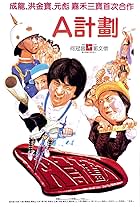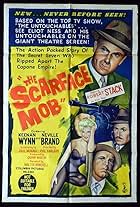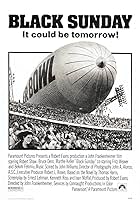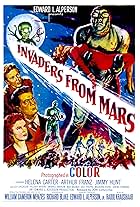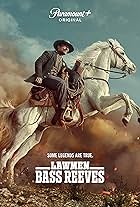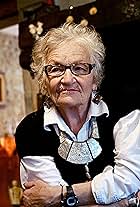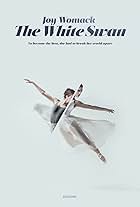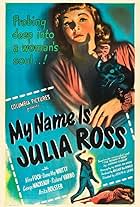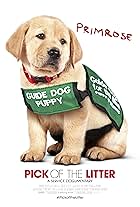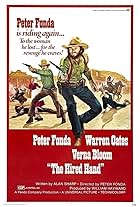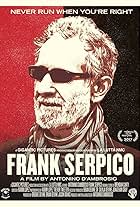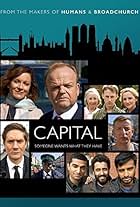wynne-1
Joined Mar 2002
Welcome to the new profile
We're still working on updating some profile features. To see the badges, ratings breakdowns, and polls for this profile, please go to the previous version.
Ratings34
wynne-1's rating
Reviews31
wynne-1's rating
I have to admit, in my view, Jackie Chan is an acquired taste. Whether this is because he came to fame after Bruce Lee, whose supremacy at the box office was unquestioned (at least as far as martial artists is concerned) or because he dared to use humour, which works very well for Chan but, in my opinion, undermines the artistry of martial arts at its cinematic best.
By the early '80s Jackie's popularity was at an all-time high. So much so that he had to be wary of imitators! Hence the ultra secret effort he and his producing studio, Golden Harvest, took by using the working title of his next film JACKIE CHAN'S PROJECT A.
Audiences in the Far East were Jackie's biggest fan base at that point. Period films set in the Qing Dynasty epoch (1600s) had been very popular up until that time but tastes were changing. Jackie recognized this and decided to explore new territory, another reason he didn't want word about the story, including its title, leaking out. Ironically, PROJECT A was not as original as it might sound to us. The story was centred around pirates and their battle with the Hong Kong Marine Police, era 1900. Lots of action means little dialogue which helps bridge the language barrier for international distribution. Chan was always inspired and influenced by Charlie Chaplin and Harold Lloyd for visual comedy and especially Buster Keaton for death-defying stunts. This proved to be the most original aspect of PROJECT A and its sequel, PROJECT A II. Chan's popularity meant he not only starred in these films, he co-wrote them and directed as well. In short, they were Jackie's show all the way.
Not only did Jackie Chan fully blossom as a star actor and director around this time, he found international exposure within a relatively brief period in Hollywood, where he appeared in films like CANNONBALL1 and CANNONBALL 2. Ironically it was a soured business deal that led to a former director colleague with Triad connections (read Chinese Mafia) that led to Chan leaving Hong Kong for a while.
Project A sets the template for Jackie Chan films: physical comedy, emphasis on falls and impacts to accentuate the fight choreography, and most significantly, the inclusion of at least one death-defying stunt. Together, PROJECT A and PROJECT A II represent the pinnacle of this fruitful season in Chan's career. In one of the extras included on the excellent Blu-ray, Chan reminds his Chinese fans that he made these films to give them the gift of laughter for Chinese New Year. And here is the key point for many of Chan's films: they are, ultimately, Action-Adventure-COMEDIES. And that is the polar opposite of Bruce Lee.
To summarize, the three best elements in PROJECT A and PROJECT A II are, in my opinion:
1. Jackie's stunt work, which is mind-boggling. Even when outright copying "gags" from Keaton, Chaplin and Lloyd, that's still him up there taking the falls and banging up his body. ("Gags" is the word Keaton used for his visual comedy.)
2. The beautiful Art Direction, which is, in places, opulent.
3. Some of the fight choreography (there is just too much of it and it goes on and on setting new standards of tedium for action films.
Jackie Chan's stardom was well-earned though some of his physical zeal is painful to watch. A trademark of Chan's films is his showing outtakes, usually of his stunts gone awry, over the end credits. Here we see Jackie being pulverized again and again by his own ambition and drive for perfectionism, which is bound by sheer repetition to fail at times. We marvel at his tenacity as the many mishaps occur. The outtakes are somewhat difficult to watch as he is all but hospitalized while executing many of these gags. Jackie got the idea to use these bits from his initial visit to Hollywood doing the CANNONBALL films with Burt Reynolds. And while we watch with a mixture mostly of laughter, amusement and awe, it is also slightly uncomfortable to be watching and enjoying someone's pain and suffering, even if that is their intention.
By the early '80s Jackie's popularity was at an all-time high. So much so that he had to be wary of imitators! Hence the ultra secret effort he and his producing studio, Golden Harvest, took by using the working title of his next film JACKIE CHAN'S PROJECT A.
Audiences in the Far East were Jackie's biggest fan base at that point. Period films set in the Qing Dynasty epoch (1600s) had been very popular up until that time but tastes were changing. Jackie recognized this and decided to explore new territory, another reason he didn't want word about the story, including its title, leaking out. Ironically, PROJECT A was not as original as it might sound to us. The story was centred around pirates and their battle with the Hong Kong Marine Police, era 1900. Lots of action means little dialogue which helps bridge the language barrier for international distribution. Chan was always inspired and influenced by Charlie Chaplin and Harold Lloyd for visual comedy and especially Buster Keaton for death-defying stunts. This proved to be the most original aspect of PROJECT A and its sequel, PROJECT A II. Chan's popularity meant he not only starred in these films, he co-wrote them and directed as well. In short, they were Jackie's show all the way.
Not only did Jackie Chan fully blossom as a star actor and director around this time, he found international exposure within a relatively brief period in Hollywood, where he appeared in films like CANNONBALL1 and CANNONBALL 2. Ironically it was a soured business deal that led to a former director colleague with Triad connections (read Chinese Mafia) that led to Chan leaving Hong Kong for a while.
Project A sets the template for Jackie Chan films: physical comedy, emphasis on falls and impacts to accentuate the fight choreography, and most significantly, the inclusion of at least one death-defying stunt. Together, PROJECT A and PROJECT A II represent the pinnacle of this fruitful season in Chan's career. In one of the extras included on the excellent Blu-ray, Chan reminds his Chinese fans that he made these films to give them the gift of laughter for Chinese New Year. And here is the key point for many of Chan's films: they are, ultimately, Action-Adventure-COMEDIES. And that is the polar opposite of Bruce Lee.
To summarize, the three best elements in PROJECT A and PROJECT A II are, in my opinion:
1. Jackie's stunt work, which is mind-boggling. Even when outright copying "gags" from Keaton, Chaplin and Lloyd, that's still him up there taking the falls and banging up his body. ("Gags" is the word Keaton used for his visual comedy.)
2. The beautiful Art Direction, which is, in places, opulent.
3. Some of the fight choreography (there is just too much of it and it goes on and on setting new standards of tedium for action films.
Jackie Chan's stardom was well-earned though some of his physical zeal is painful to watch. A trademark of Chan's films is his showing outtakes, usually of his stunts gone awry, over the end credits. Here we see Jackie being pulverized again and again by his own ambition and drive for perfectionism, which is bound by sheer repetition to fail at times. We marvel at his tenacity as the many mishaps occur. The outtakes are somewhat difficult to watch as he is all but hospitalized while executing many of these gags. Jackie got the idea to use these bits from his initial visit to Hollywood doing the CANNONBALL films with Burt Reynolds. And while we watch with a mixture mostly of laughter, amusement and awe, it is also slightly uncomfortable to be watching and enjoying someone's pain and suffering, even if that is their intention.
The great Hollywood Director Howard Hawks left an impressive body of work still enjoyed by film critics and general audiences today. Although his last film was RIO LOBO in 1971, (one of many collaborations with John Wayne) Hawks' continues to influence contemporary filmmakers, such as Quentin Tarantino, who went so far as to model one of his sets for PULP FICTION on a Hawks-derived nightclub/restaurant set in RED LINE 7000. Hawks is revered internationally as well, which begs the question doesn't late career, past-his-prime-Hawks deserve another look? RED LINE 7000 falls into that category and surprisingly shows there was still some gas left in Hawks' tank when he undertook this racing car movie, even if he apparently took it on primarily because his son, Gregg, was really into cars!
True, RED LINE 7000 can't help but compare unfavourably with the best of the Hawks canon which includes SERGEANT YORK (with Gary Cooper), RED RIVER and RIO BRAVO (both with John Wayne) and numerous others. But there are occasions when the passage of time suggests the initial critical reaction to a motion picture to be wrong. With Hawks' third last film, RED LINE 7000, there appears to be an ongoing critical assessment of this unusual film.
For years, Howard Hawks' third last film was thought by many film critics to be nothing more than a soap-ish '60s car racing film in the vein of GRAND PRIX or LE MANS to name a few. Those films did have an influence on Hawks, (nick-named The Silver Fox) who was intrigued with the idea of telling multiple stories simultaneously, something particularly well done in director John Frankenheimer's GRAND PRIX.
All directors (if they get to make enough films) have their ups and downs. When Hawks tried to be stylish, it worked perfectly, like in RIO BRAVO. When it didn't work as well was when he tried to be trendy as opposed to stylish. One might say "trendy dates, stylish creates." Hawks' style was dependent on a number of factors, including not being rushed. This extended to pre-production casting sessions, which could go on for months. In RED LINE 7000 Hawks was trying to tell multiply storylines, which added to the need for surety in the casting. In the end, Hawks discovered James Caan, whom he also subsequently used in his next to last film, EL DORADO. Hawk's other outstanding discovery was German-born Marianna Hill, who exudes an enticing European sexiness (she is supposed to be French.) The balance of the casting was rather hit or miss, although Laura Devon had her moments. Some of the behind-the-camera choices, such as the hiring of Bruce Kessler to film the actual racing footage used in the film, lend a degree of authenticity to the proceedings. Kessler, a former race-car driver, worked as the second unit Director on RED LINE 7000. But even these scenes are somewhat undermined by the studio's insistence and Hawks' compliance to include product placement throughout the film. Product placement was a relatively new idea in motion pictures at the time. Simply put, it was like inserting, mini commercials into the fabric of the film. For example, every time someone turns around, there is a shot of a Pepsi-Cola ad or product. The practice became so blatant that after the film opened, Pepsi registered a formal complaint as to the placement of a bottle in one scene, claiming the bottle was "placed in a suggestive manner" (i.e. Phallic) during a love scene between Caan and Hill! So much for subtlety. Product placement did bring in a lot of money, even though the budget was more than adequate .
A very strange musical number is included in the night club scene where, among the waitresses/go-go dancers, is a young Teri Garr, who recently passed away. Interestingly, while this scene in RED LINE 7000 had always seemed to her and many critics as the height of camp, Ms. Garr on one occasion commented about working some years later in CLOSE ENCOUNTERS OF THE THIRD KIND with esteemed French director/actor François Truffaut, who had studied all Hawks' films and was passionate among RED LINE 7000's supporters. He peppered her with questions about the making of the film and she was surprised by his high regard for it and that scene in particular.
Product placement, strange musical numbers... There is a patchwork feel to RED LINE 7000 with its compromised music score and uncertain casting; heck, Jerry Lewis even does a cameo, though it is next to impossible to spot him. Lewis was the big man on the Paramount lot at the time and he cajoled his way into working for Hawks, his esteem for the director such that he said he wouldn't cash his cheque, but rather frame it.
Maybe the real issue with RED LINE 7000 can be summarised as follows: Hawks was simply out of his comfort zone. Maybe he should've stuck with horses and not cars.
RED LINE 7000 will always have its detractors, (at the initial premiere, James Caan was suicidal!) but it also has a slowly-growing list of admirers. At least with the proper new Blu-ray release, packed with insightful extras, we all have the opportunity to make up our own mind.
True, RED LINE 7000 can't help but compare unfavourably with the best of the Hawks canon which includes SERGEANT YORK (with Gary Cooper), RED RIVER and RIO BRAVO (both with John Wayne) and numerous others. But there are occasions when the passage of time suggests the initial critical reaction to a motion picture to be wrong. With Hawks' third last film, RED LINE 7000, there appears to be an ongoing critical assessment of this unusual film.
For years, Howard Hawks' third last film was thought by many film critics to be nothing more than a soap-ish '60s car racing film in the vein of GRAND PRIX or LE MANS to name a few. Those films did have an influence on Hawks, (nick-named The Silver Fox) who was intrigued with the idea of telling multiple stories simultaneously, something particularly well done in director John Frankenheimer's GRAND PRIX.
All directors (if they get to make enough films) have their ups and downs. When Hawks tried to be stylish, it worked perfectly, like in RIO BRAVO. When it didn't work as well was when he tried to be trendy as opposed to stylish. One might say "trendy dates, stylish creates." Hawks' style was dependent on a number of factors, including not being rushed. This extended to pre-production casting sessions, which could go on for months. In RED LINE 7000 Hawks was trying to tell multiply storylines, which added to the need for surety in the casting. In the end, Hawks discovered James Caan, whom he also subsequently used in his next to last film, EL DORADO. Hawk's other outstanding discovery was German-born Marianna Hill, who exudes an enticing European sexiness (she is supposed to be French.) The balance of the casting was rather hit or miss, although Laura Devon had her moments. Some of the behind-the-camera choices, such as the hiring of Bruce Kessler to film the actual racing footage used in the film, lend a degree of authenticity to the proceedings. Kessler, a former race-car driver, worked as the second unit Director on RED LINE 7000. But even these scenes are somewhat undermined by the studio's insistence and Hawks' compliance to include product placement throughout the film. Product placement was a relatively new idea in motion pictures at the time. Simply put, it was like inserting, mini commercials into the fabric of the film. For example, every time someone turns around, there is a shot of a Pepsi-Cola ad or product. The practice became so blatant that after the film opened, Pepsi registered a formal complaint as to the placement of a bottle in one scene, claiming the bottle was "placed in a suggestive manner" (i.e. Phallic) during a love scene between Caan and Hill! So much for subtlety. Product placement did bring in a lot of money, even though the budget was more than adequate .
A very strange musical number is included in the night club scene where, among the waitresses/go-go dancers, is a young Teri Garr, who recently passed away. Interestingly, while this scene in RED LINE 7000 had always seemed to her and many critics as the height of camp, Ms. Garr on one occasion commented about working some years later in CLOSE ENCOUNTERS OF THE THIRD KIND with esteemed French director/actor François Truffaut, who had studied all Hawks' films and was passionate among RED LINE 7000's supporters. He peppered her with questions about the making of the film and she was surprised by his high regard for it and that scene in particular.
Product placement, strange musical numbers... There is a patchwork feel to RED LINE 7000 with its compromised music score and uncertain casting; heck, Jerry Lewis even does a cameo, though it is next to impossible to spot him. Lewis was the big man on the Paramount lot at the time and he cajoled his way into working for Hawks, his esteem for the director such that he said he wouldn't cash his cheque, but rather frame it.
Maybe the real issue with RED LINE 7000 can be summarised as follows: Hawks was simply out of his comfort zone. Maybe he should've stuck with horses and not cars.
RED LINE 7000 will always have its detractors, (at the initial premiere, James Caan was suicidal!) but it also has a slowly-growing list of admirers. At least with the proper new Blu-ray release, packed with insightful extras, we all have the opportunity to make up our own mind.
Back in the good old days of television censorship, shows like THE UNTOUCHABLES were never allowed to be shown without first having passed the strict rules of censorship insisted upon by sponsors and ever-cautious studio executives. As history has shown us, eventually there was a backlash to such concerns. The end result? Well, such considerations are always subjective and many viewers today might wonder aloud how shows like THE SOPRANOS could ever have come to be in such an environment.
For better or for worse, things have changed. But those who might label shows like THE UNTOUCHABLES "naïve" had best be reminded that it took an awful lot of creativity to work around the limits of early television censorship to present programming as violent, hard-hitting and memorable as THE UNTOUCHABLES or, as we have it here: THE SCARFACE MOB.
THE SCARFACE MOB was the name of the two-part pilot for the Westinghouse Desilu Playhouse Anthology series on CBS. Desilu was the television production company created by Desi Arnaz and Lucille Ball. Together they were committed to the artistic growth as well as financial success of the medium. The same way they pushed the envelope in comedy with I LOVE LUCY no doubt inspired their attempts to do the same with drama. We'll never known the full extent of the battles that went on behind closed doors to finally get the green light from rival network ABC (after CBS passed) to go ahead with the weekly series of THE UNTOUCHABLES. Two factors must have come to mind in favour of producing the show. The series was based on fact and not too distant recent (though almost forgotten) history; and more importantly, each episode of THE UNTOUCHABLES ultimately represented a morality play with good triumphing over evil. Thus, with the inherent morality intact, THE SCARFACE MOB, with a lot of editing apparently, gave birth to the long-running popular program THE UNTOUCHABLES that proved over its four-season life span there was an audience for such violent fare-so long as the good guys won in the end.
Robert Stack (sounding like Gary Cooper's younger brother) stars as agent Eliot Ness, whose real-life exploits during Prohibition were largely forgotten by the time the series was made. Ness struggled financially and was almost penniless in his later years. He died in1957 of a heart attack at the mere age of 54 while working on his memoirs as a desperate means of generating some income. Stack was perfect for the part, though he was not first choice. That distinction went to Arnaz' friend, Van Johnson, whose agent made the fatal error of asking for too much money--$10,000 for each of the two-part episodes! Outraged, Arnaz withdrew the offer and called Stack, offering him the role. Stack accepted immediately and the rest is television history!
The real standout performance is Neville Brand as Al Capone, broad Italian accent and all. Combined with terrific atmosphere, a constant stream of bullets, beautiful women in '20s-era dresses and strongly delineated characters who are either black or white, good or bad, THE SCARFACE MOB sizzles with the promise of danger at every turn. Ambiguity and subtlety have no place in the world of THE SCARFACE MOB.
For better or for worse, things have changed. But those who might label shows like THE UNTOUCHABLES "naïve" had best be reminded that it took an awful lot of creativity to work around the limits of early television censorship to present programming as violent, hard-hitting and memorable as THE UNTOUCHABLES or, as we have it here: THE SCARFACE MOB.
THE SCARFACE MOB was the name of the two-part pilot for the Westinghouse Desilu Playhouse Anthology series on CBS. Desilu was the television production company created by Desi Arnaz and Lucille Ball. Together they were committed to the artistic growth as well as financial success of the medium. The same way they pushed the envelope in comedy with I LOVE LUCY no doubt inspired their attempts to do the same with drama. We'll never known the full extent of the battles that went on behind closed doors to finally get the green light from rival network ABC (after CBS passed) to go ahead with the weekly series of THE UNTOUCHABLES. Two factors must have come to mind in favour of producing the show. The series was based on fact and not too distant recent (though almost forgotten) history; and more importantly, each episode of THE UNTOUCHABLES ultimately represented a morality play with good triumphing over evil. Thus, with the inherent morality intact, THE SCARFACE MOB, with a lot of editing apparently, gave birth to the long-running popular program THE UNTOUCHABLES that proved over its four-season life span there was an audience for such violent fare-so long as the good guys won in the end.
Robert Stack (sounding like Gary Cooper's younger brother) stars as agent Eliot Ness, whose real-life exploits during Prohibition were largely forgotten by the time the series was made. Ness struggled financially and was almost penniless in his later years. He died in1957 of a heart attack at the mere age of 54 while working on his memoirs as a desperate means of generating some income. Stack was perfect for the part, though he was not first choice. That distinction went to Arnaz' friend, Van Johnson, whose agent made the fatal error of asking for too much money--$10,000 for each of the two-part episodes! Outraged, Arnaz withdrew the offer and called Stack, offering him the role. Stack accepted immediately and the rest is television history!
The real standout performance is Neville Brand as Al Capone, broad Italian accent and all. Combined with terrific atmosphere, a constant stream of bullets, beautiful women in '20s-era dresses and strongly delineated characters who are either black or white, good or bad, THE SCARFACE MOB sizzles with the promise of danger at every turn. Ambiguity and subtlety have no place in the world of THE SCARFACE MOB.
